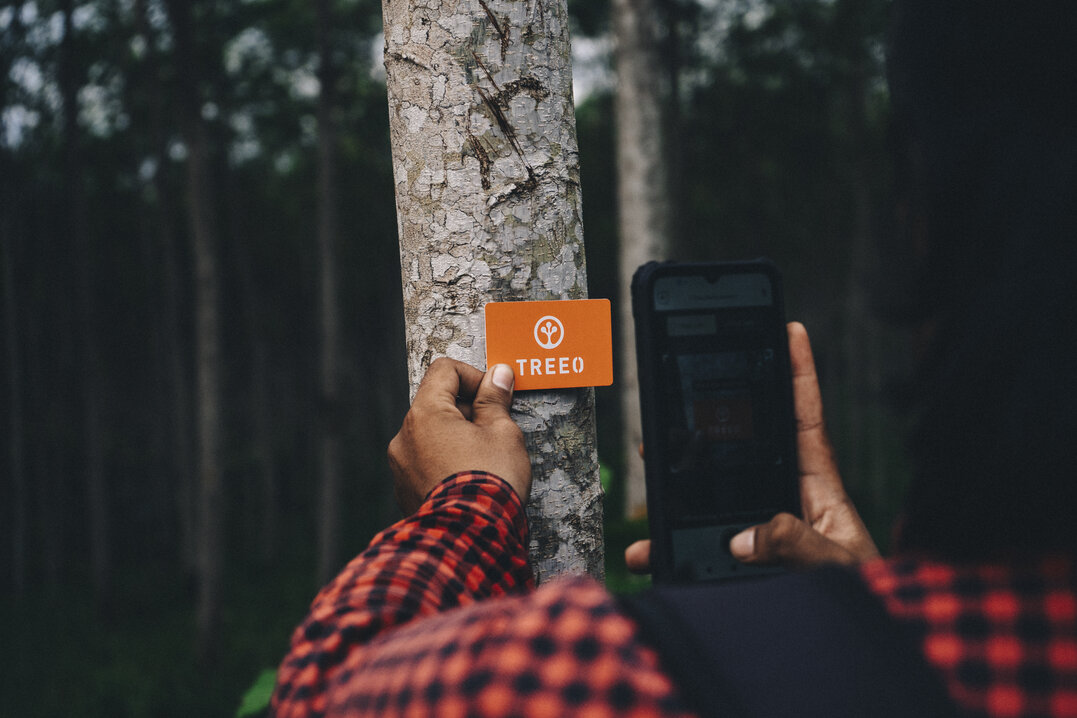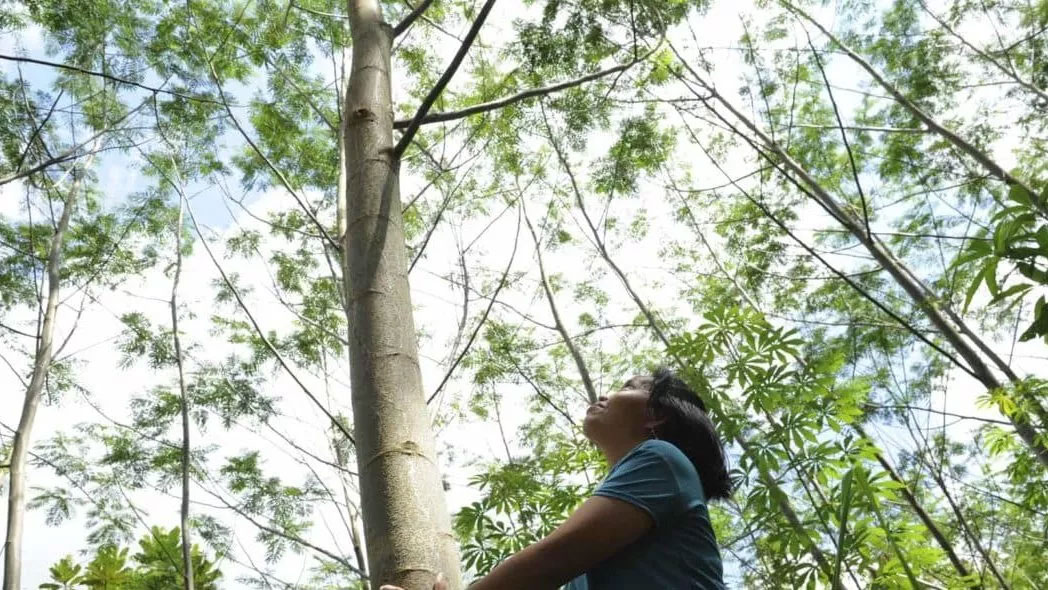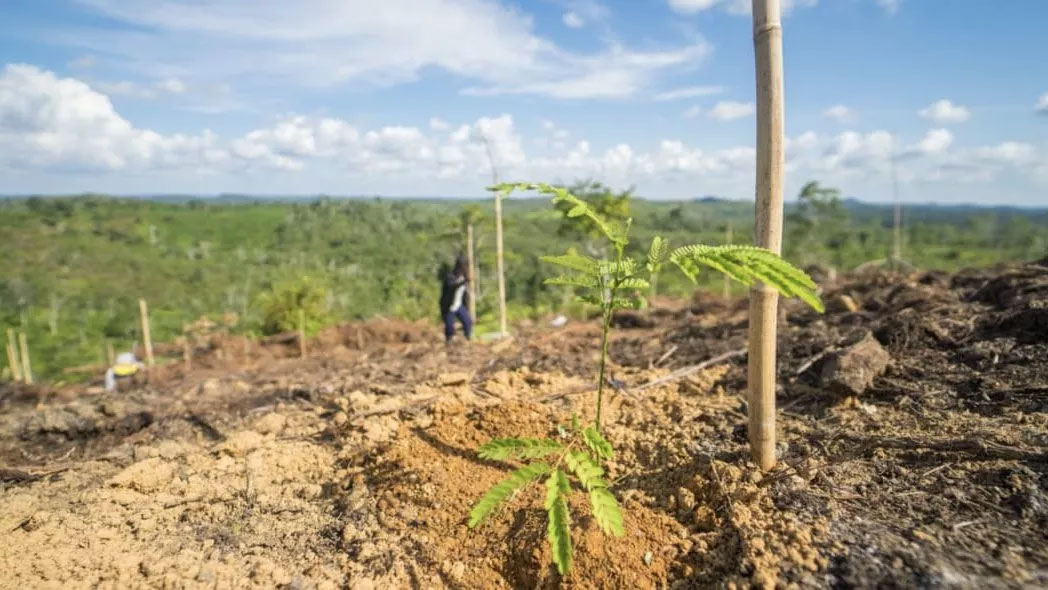Therefore: TREEO

Recently, The Guardian published an article that raised concerns about the effectiveness of carbon-offset projects within the voluntary carbon market (VCM) that focus on deforestation. Deforestation and land use change are one of the largest threats to our climate and biodiversity, and thus, our own life quality. But when it comes to climate change, real solutions are rarely as straightforward as just avoiding deforestation.
Setting the story straight
Projects that avoid deforestation, like REDD+, have their shortcomings as climate solutions. The credits from avoided emissions are estimations of what would have happened if the project had not taken place.
The truth is, even when a company reduces its emissions, some hard-to-abate emissions will still make it into our atmosphere. Paying to avoid deforestation elsewhere does not counterbalance that. But removing CO2 from our atmosphere plays this necessary counterbalancing role. If we are to achieve the 1.5°C goal, as stated by the IPCC: "the deployment of carbon dioxide removal (CDR) is unavoidable".
Avoidance will never bring "neutrality"
A zero emissions target is not realistic. We can only reduce emissions to a certain point before it gets too expensive or disruptive. For the foreseeable future companies will continue to have residual emissions.
Net-zero targets, on the other hand, are something we can strive for. In a net-zero scenario, emissions are still released, while we continue to reduce them. But, in this scenario, emissions are also counterbalanced. We do this by removing an equivalent amount of CO2 from the atmosphere and storing it for the long term. For this, we have technological solutions - most of which are still under development - and nature-based solutions - like trees!
At TREEO we recognize the importance of avoiding deforestation for a myriad of reasons - which we also support. But avoiding deforestation does not pass the additionality rule for high-quality carbon credits. This is why we work to reforest and restore degraded land. We work hand-in-hand with local farmers and tree growers - who keep their land rights. This way they reap the benefits of reforestation and agroforestry directly, while removing CO2 from our atmosphere.
What exactly is in a "high-quality carbon credit"?
As mentioned before, additionality is one of the requirements for high-quality carbon credits. But what does this mean? And what other requirements are there? We think that a “high-quality carbon credit” is a real, measurable, transparent CO2-Removal. And we distinguish between carbon capture and carbon storage. Here we explain the three requirements that tend to raise concerns when it comes to deforestation avoidance projects as climate solutions.
Additionality
Deforestation offsets lack additionality. This means that the emissions reduced or avoided would have happened anyway (SBTi), even without the incentive created by the offset. For example, if a forest was never targeted for deforestation, preserving it should not count as an offsetting credit. In some cases, like deforestation avoidance claims, it might be hard to prove. Restoring degraded land, on the other hand, covers this additionality quality.
Leakage
Another one of the main criticisms of REDD+ is the issue of leakage. Leakage refers to the unintended consequences of reducing emissions in one area that can increase emissions in a different area. For example, if a project aims to reduce deforestation in a specific area that could result in displacing local people and shifting deforestation activities to a different place.
Permanence or durability
A third weakness of REDD+ projects is the permanence of the carbon stored in the forest. Let's assume a REDD+ project comes to an end: if the forest protection is lifted and further destroyed, the avoided emissions are lost. Or, rather, emitted at last.
A growing forest can capture more CO2 from our atmosphere than a mature forest in the same period of time. For this reason, harvesting and replanting cycles can remove more CO2 from our atmosphere. That is, as long as the harvested wood goes into long-term storage products.
TREEO carbon dioxide removals and long-term storage
By measuring every single tree’s carbon dioxide removals (CDR) once per year, TREEO offers the transparency this sector has been missing. CDR through ecosystem restoration and reforestation offers a way to bring integrity back to CDR projects. Restoration and planting on degraded land guarantee the additionality of our carbon removals. At the same time, these measures provide co-benefits such as improved biodiversity, water quality, and soil health, among others.
These solutions are also less susceptible to leakage from at least two perspectives. First, the removals occur directly as a consequence of reforestation or restoration. And second, at TREEO we involve local people in every step of the process, fairly compensating them for their work from the tree nurseries to the monitoring phases. At TREEO we put tree growers first. Our tree planting partners retain their land rights, and they benefit from agroforestry practices and from selling cash crops, in addition to their carbon equity.
TREEOs carbon product captures CO2 from the atmosphere with new trees in forests, and we store this carbon in the long-term in forests (in trees and soil), as well as timber for the construction sector, other wood products, and biochar. With these end-products, we guarantee the carbon is stored for decades to even centuries.
But integrity doesn't come through planting alone
As quoted in this other recent Guardian article, high-integrity carbon credits need to be based on science and clear, measurable, verifiable data. Traditional data collection for nature-based climate solutions is prone to error and manipulation. Tree-by-tree monitoring offers a more comprehensive view and real data.
The TREEO App calculates the biomass and carbon stored by each tree through image processing and machine learning for each species with a 95% accuracy. Combined with enhanced satellite data, TREEO ensures verified carbon removals. This directly involves and benefits the farmers, provides data-based advice, and a traceable impact of long-term reforestation projects that guarantee accurate and transparent carbon removals for companies.
TREEO also enables tree growers to see the impact and value of their efforts and helps them enter the carbon market. So, TREEO not only helps companies to move towards their net-zero goals but also supports tree growers' livelihoods. This empowers local communities to regenerate the Earth while generating new revenue, as we continue our mission to collectively mitigate climate change. TREEO will embrace new standards developed with the best partners in the ecosystem, instead of building on the existing carbon credit standards available today.
At its core, TREEO empowers tree growers to supply high-quality CDR at scale and helps them capitalize on their carbon equity. Our balancers (companies on the path to net zero) contribute to the climate financing of these nature-based solutions and in return get traceable, transparent data of the projects they finance. We develop the TREEO technology to facilitate this process.
_
There are more requirements than additionality, permanence, and leakage prevention that high-quality carbon credits must satisfy to be considered as high-quality. You can check out more here!
Related news

Good forests as Climate Solutions: How do rainforests store CO2 in the long term?
Recently, The Guardian published an article that raised concerns about the effectiveness of carbon-offset projects within the voluntary carbon market…

Why reforestation is more than just planting trees
Recently, The Guardian published an article that raised concerns about the effectiveness of carbon-offset projects within the voluntary carbon market…